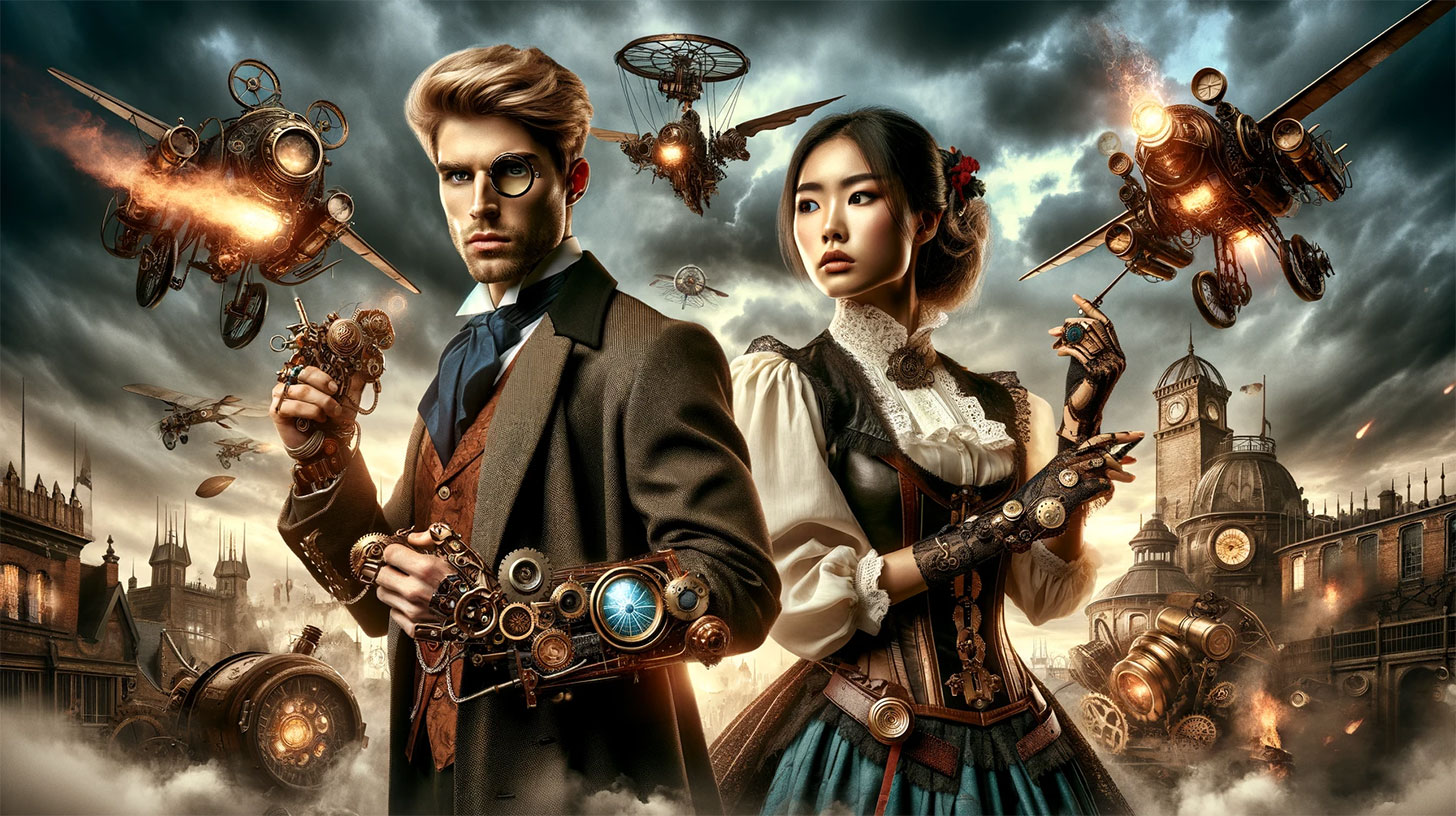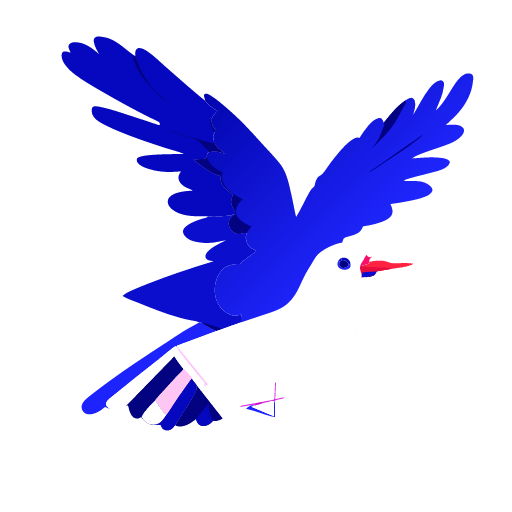The world of artificial intelligence is rapidly evolving, especially in the realm of creative technology. Two groundbreaking tools at the forefront of this innovation are DALL-E and Midjourney, both offering unique approaches to AI-driven image creation. This emergence has sparked a fascinating debate in the tech community: DALL-E vs Midjourney – which one leads the race in AI creativity?
Let’s dive in to see:
- The distinctive features and capabilities of both DALL-E and Midjourney.
- How these tools compare in terms of performance, user experience, and creative output.
- The potential impact of these AI technologies on the future of creative industries.
As we delve into the specifics of each tool, their strengths, weaknesses, and ideal use-cases, you’ll gain a comprehensive understanding of how these technologies are reshaping the landscape of digital creativity.
DALL-E
DALL-E, a creation of OpenAI, represents a significant leap in AI-driven artistry. Named whimsically after the famous surrealist artist Salvador Dalí and Pixar’s WALL-E, this tool epitomizes the fusion of art and AI. At its core, DALL-E is an advanced neural network specializing in generating complex and detailed images from textual descriptions, showcasing an unprecedented level of creativity and accuracy.
The technology powering DALL-E is rooted in a variant of GPT-3, OpenAI’s language model, adapted for visual tasks. This allows DALL-E to interpret and visualize concepts in a way that’s both literal and abstract, often producing results that are as whimsical as they are technically impressive. From realistic renderings to surreal compositions, DALL-E’s versatility is remarkable.
Despite its prowess, DALL-E is not without limitations. The accuracy of its output can vary, and it sometimes struggles with more abstract or nuanced requests. Yet, its ability to generate a wide range of artistic styles and respond to complex prompts has made it a popular tool among artists, designers, and creatives seeking to push the boundaries of digital art.
Midjourney
Midjourney stands as a fascinating counterpart to DALL-E in the world of AI-powered image generation. While it may not have the same level of widespread recognition as DALL-E, Midjourney has carved out its own niche, captivating a dedicated user base with its unique capabilities and approach to visual creativity.
The essence of Midjourney lies in its ability to transform text prompts into vivid, often strikingly detailed images. What sets it apart is the style of its outputs, which tend to lean towards a more artistic, sometimes ethereal quality, unlike the more literal interpretations often seen in DALL-E. This distinction marks Midjourney as a tool that appeals particularly to those looking for a blend of realism and artistic abstraction in their creations.
Technologically, Midjourney operates on principles similar to those of DALL-E, using complex algorithms to interpret and visualize textual descriptions. However, it is the nuances in its programming that result in a distinctly different style of image generation. Midjourney’s outputs are known for their dreamlike, almost painterly quality, making it a favorite for projects that require a more artistic touch.
Like DALL-E, Midjourney is not without its limitations. It may not always perfectly capture the intent of more complex or ambiguous prompts. Nonetheless, its unique style and the quality of its outputs have established Midjourney as a tool of choice for artists and designers who appreciate its particular blend of AI-driven creativity.
DALL-E vs Midjourney
When it comes to comparing DALL-E and Midjourney, the distinctions are as fascinating as they are significant. Both tools excel in their own right, but understanding their differences is key to determining which tool is best suited for specific creative endeavors.
Image Generation Capabilities: DALL-E is renowned for its ability to generate highly detailed and accurate images from textual descriptions. Its strength lies in creating visuals that are close to the literal interpretation of the given prompts. Midjourney, on the other hand, often produces images with a more artistic flair, offering a blend of realism and imagination that can be ideal for abstract or thematic projects.
Accuracy and Creativity: While DALL-E excels in accuracy, Midjourney shines in its creative interpretation. DALL-E’s outputs are often more precise and true to the provided descriptions, making it suitable for projects where accuracy is paramount. Midjourney’s outputs, though sometimes less literal, are imbued with a unique artistic quality that can be more engaging for projects requiring a creative touch.
User Interface and Ease of Use: Both tools have user-friendly interfaces, but their approaches vary. DALL-E’s interface is straightforward, allowing users to input text and receive images with minimal fuss. Midjourney also provides an intuitive experience, but its interface might appeal more to users who enjoy exploring and experimenting with more abstract concepts.
Application in Various Industries: In practical applications, DALL-E could be the go-to tool for tasks that require precise visual representations, like product mockups or educational illustrations. Midjourney, with its artistic leanings, is well-suited for creative industries such as advertising, gaming, or film, where evocative and imaginative visuals are often key.
In summary, the choice between DALL-E and Midjourney depends largely on the specific needs and creative goals of the user. While DALL-E offers precision and literal interpretation, Midjourney excels in artistic expression and thematic visuals.
What users think
The user experience and community response to DALL-E and Midjourney offer valuable insights into their practical applications and overall reception. Both tools have fostered enthusiastic communities, each with distinct preferences and experiences.
DALL-E: Users of DALL-E often praise its ability to accurately render complex ideas and concepts into clear, detailed images. Its straightforward interface and the fidelity of its outputs have made it a favorite among professionals in fields such as graphic design, education, and product development. However, some users note that the literal nature of DALL-E’s interpretations can sometimes limit creativity, especially when seeking more abstract or stylized results.
Midjourney: Midjourney users are typically drawn to its artistic and imaginative outputs, which offer a unique blend of realism and fantasy. This has made it particularly popular among artists, game designers, and those in the advertising industry. The feedback highlights its ability to inspire creativity and produce visually stunning images that often exceed expectations. Nevertheless, there are mentions of occasional inconsistencies in interpreting abstract prompts, which can be a consideration for projects requiring specific thematic elements.
The communities around these tools are vibrant, with users sharing their creations and tips, thus fostering an environment of collaborative learning and exploration. The choice between DALL-E and Midjourney often comes down to the user’s specific needs and creative preferences, with each tool having its own strengths and loyal following.
Future Implications and Trends
The advent of AI tools like DALL-E and Midjourney is not just a current phenomenon but a glimpse into the future of creativity and technology. Their impact is set to extend far beyond current capabilities, influencing various aspects of the creative industries.
Innovation and Evolution: Both DALL-E and Midjourney are at the forefront of a rapidly evolving field. As these tools become more sophisticated, we can expect them to offer even more advanced features, such as improved understanding of complex prompts and enhanced creativity in image generation. This continual innovation will likely open new doors for artists and designers, offering them unprecedented tools to realize their visions.
Shifting Creative Processes: The integration of AI in creative workflows is already changing how artists and designers approach their projects. These tools are not just assistants but collaborators, bringing new perspectives and possibilities to the creative process. As they become more ingrained in the industry, we may see a shift in the roles of human artists, who will increasingly focus on guiding and refining the output of these AI systems.
Broader Industry Impact: Beyond the realms of art and design, DALL-E and Midjourney have potential applications in areas like advertising, entertainment, and education. Their ability to quickly generate diverse visuals can significantly reduce production times and costs, making high-quality creative content more accessible to a wider range of businesses and educational institutions.
Ethical and Societal Considerations: As with any technology, the rise of AI in creativity brings its own set of ethical and societal questions. Issues around copyright, originality, and the role of AI in art will continue to be important discussions as these tools become more integrated into mainstream creative practices.
In conclusion, the future implications of DALL-E and Midjourney are as vast as they are exciting. These tools are not just shaping the current landscape of digital art but are also paving the way for a new era of creativity, where the boundaries between human and machine-generated art become increasingly blurred.
So where do we end up
The exploration of DALL-E and Midjourney in this article has shed light on two of the most innovative tools in the realm of AI-driven creativity. We’ve seen how DALL-E excels in generating accurate, detailed images from textual prompts, making it ideal for projects requiring precision. Meanwhile, Midjourney captivates with its artistic and imaginative outputs, offering a unique blend of realism and abstraction suited for more thematic or stylized projects.
Key Takeaways:
- DALL-E and Midjourney, while similar in their core function of image generation, cater to different creative needs and preferences.
- DALL-E stands out for its accuracy and literal interpretations, whereas Midjourney is celebrated for its artistic flair and imaginative renditions.
- The impact of these tools extends beyond immediate creative tasks, promising to reshape creative workflows and broaden the horizons of digital artistry.
As we look to the future, the integration of AI in creative industries is not just a possibility but an unfolding reality. For those intrigued by the potential of AI in creativity, a natural next step would be to explore how these tools can be incorporated into various artistic and design processes. Whether you are an artist, designer, or simply an enthusiast of technology and creativity, the journey into AI-powered art is just beginning.




